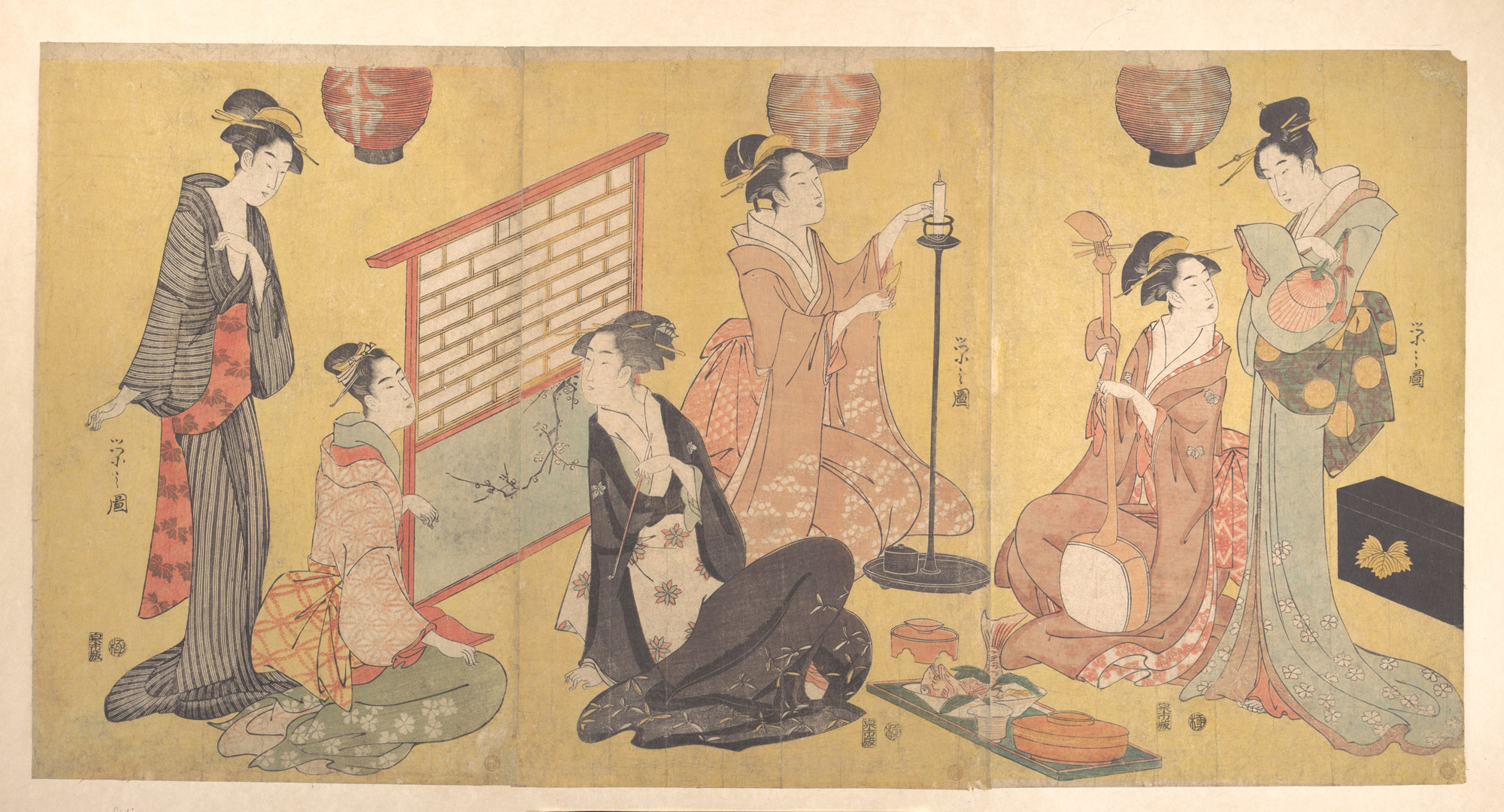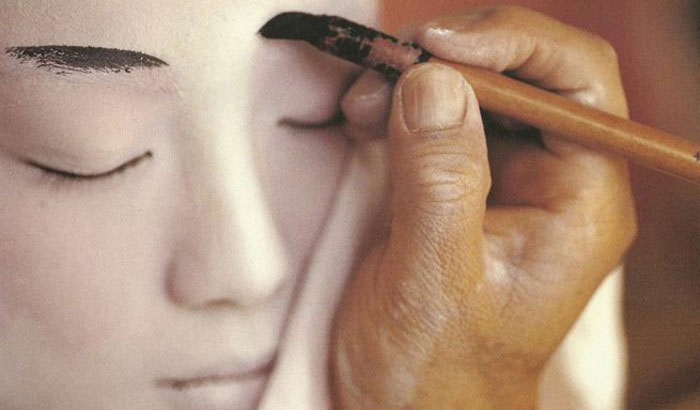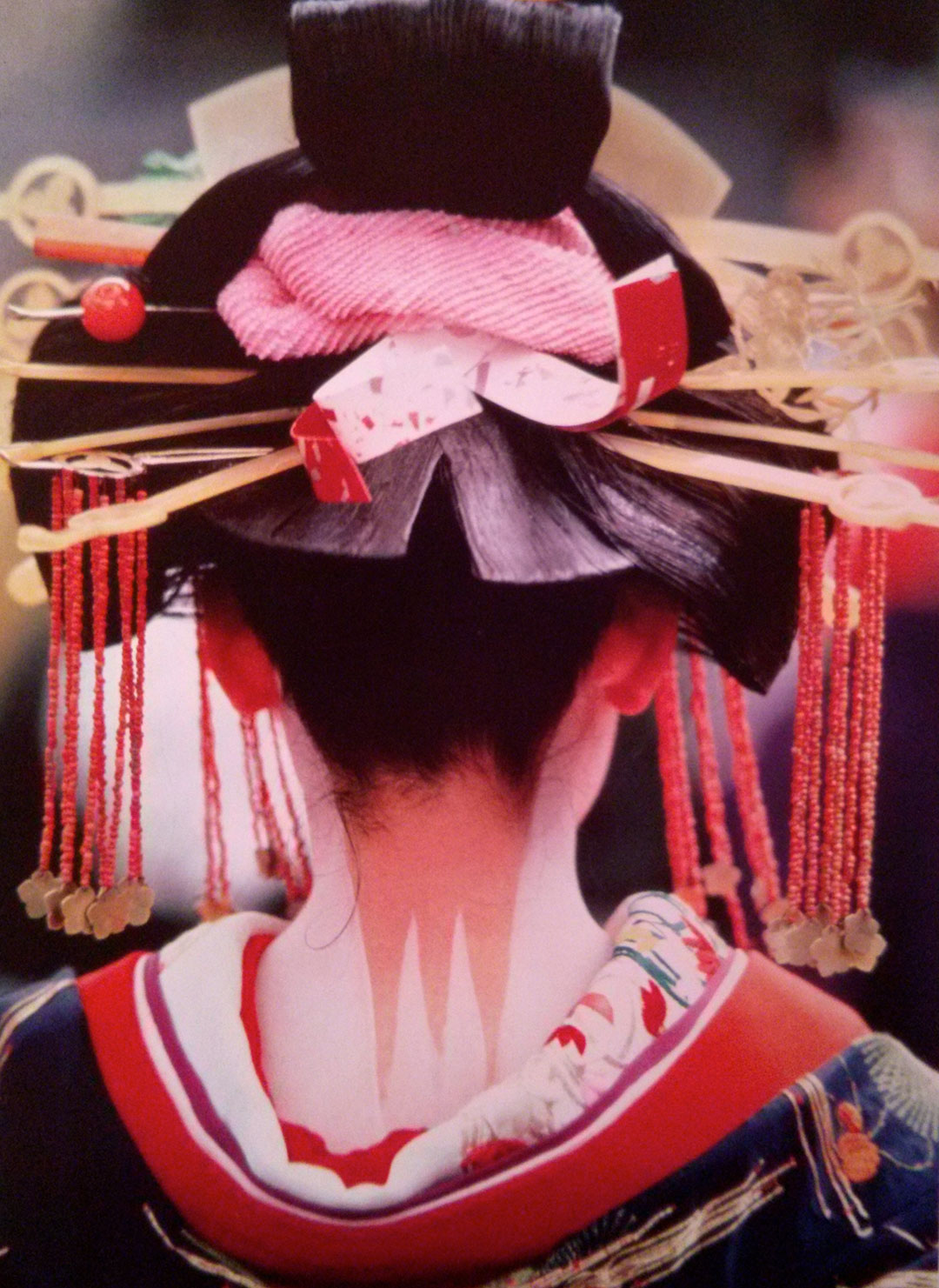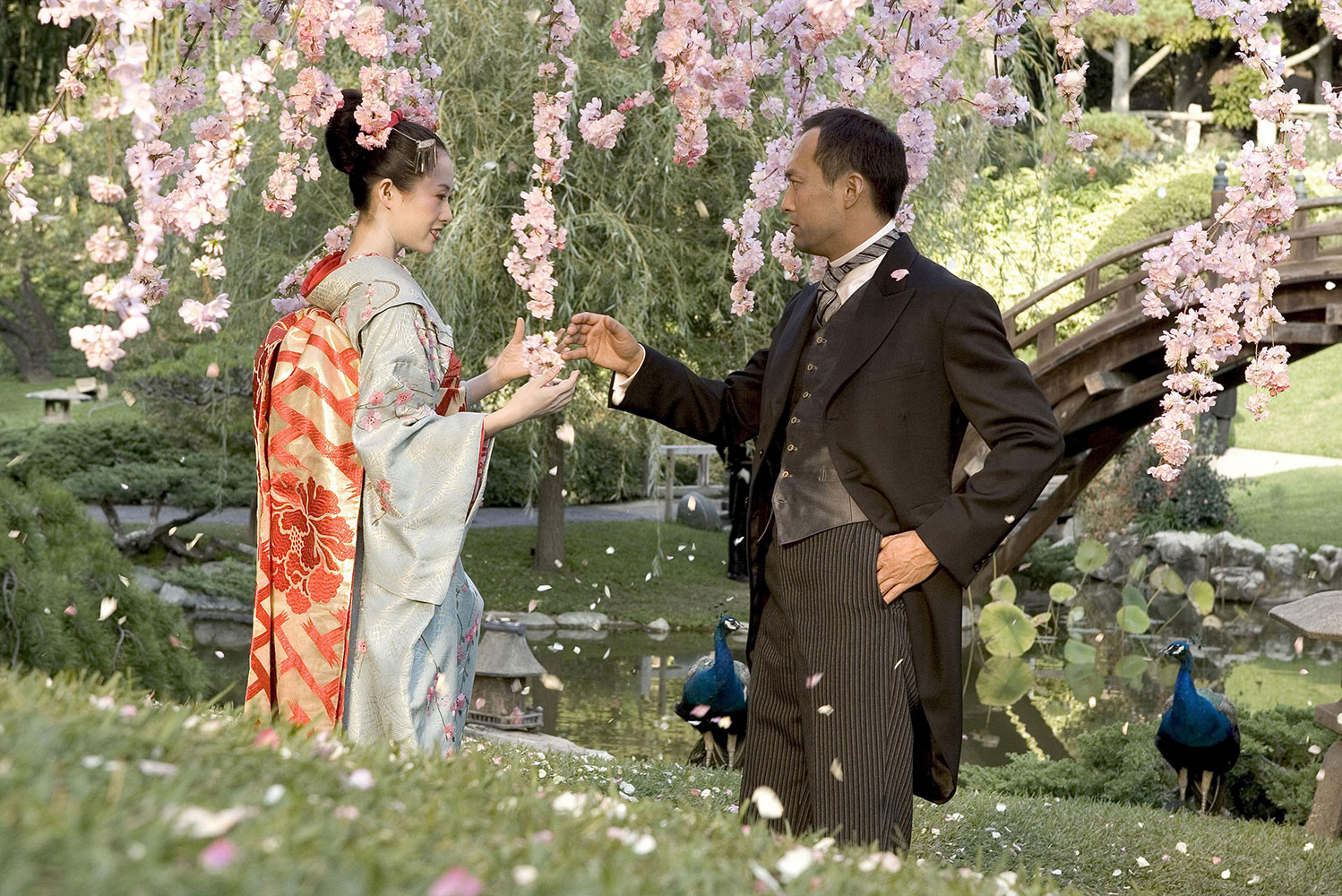Japanese Culture: Geisha & Maiko
Maiko e Geisha: Artiste danzanti.

photo credit: metmuseum.org
La figura artistica più rappresentativa ma al contempo misteriosa del “Sol levante” è la Geisha (芸者 “Persona d’arte”).
Spesso viene confusa con la Maiko (舞妓 “Fanciulla danzante”) che è l’apprendista a questa professione. Per diventare una Geisha si deve fare una lunga gavetta e frequentare scuole apposite. Qui si impara a danzare, cantare e nell’uso del Shamisen (三味線 “Tre corde” tipico strumento musicale). Per quanto riguarda l’intrattenimento con il pubblico, la Maiko impara tutto accompagnando una Geisha in giro per le case da tè. Il rapporto che c’è tra Maiko e Geisha è una “sorellanza” vera e propria. Le due si chiameranno rispettivamente imoto-san “sorella minore” e onee-san “sorella maggiore”. Il legame è cosi stretto che il nome d’arte per la futura Geisha viene deciso dalla “sorella maggiore” e lo porterà per tutta la carriera artistica.


photo credit: freshdesignpedia.com
I kimono dai colori sgargianti col passare del tempo tenderanno a diventare scuri. Le Nihongami, pettinature risalenti al periodo Edo, sono molto complicate sia da fare che da mantenere. Esse vengono ornate dai Kanzashi, spilloni decorativi che variano a seconda delle stagioni (Es. fiori durante la primavera, colombe a capodanno). Queste diventeranno più sobrie ed il trucco eccessivo con piccole labbra color carminio che risaltano su una maschera nivea sarà sostituito per un risultato più naturale. Il piccolo vezzo del collo esposto (che nella cultura giapponese è una delle parti più sensuali della donna) da due linee bianche dipinte passeranno a tre.
Nel passato le figlie delle Geisha percorrevano fin dalla prima età questo percorso. Oggi è più comune iniziare l’apprendistato conclusi gli studi universitari. Tuttavia, questa è una professione che si sceglie liberalmente e non per continuare una tradizione familiare. C’è da dire che questa comunità tutta al femminile con tradizioni rigide e una forte etica morale tiene molto a celare il loro segreto secolare.
“L’arte di essere donna”

photo credit: Pinterest
Solitamente, nel nostro immaginario vediamo la Geisha come donna ricca di fascino ma succube, devota al proprio uomo in ogni più piccolo capriccio. Tuttavia questo è un errore poiché nel passato furono le prime donne con piena autonomia della società Nipponica.
Tutto iniziò con i Taikomochi (太鼓持), giullari che intrattenevano con acrobazie e battute umoristiche lo Shōgun (将軍 “comandante dell’esercito”) e i Daimyō (大名) la nobiltà feudale.
Benché i Taikomochi erano molto amati per lo spirito goliardico che portavano a corte, questa figura andò man mano sparendo con l’apparizione delle prime Geisha ovviamente dando non poco scalpore ma venendo preferite per i movimenti sensuali e la grazia femminile.
Ma queste donne non erano cortigiane ne prostitute di lusso. Queste ultime nella cultura giapponese sono identificate come Oiran (花魁). Le Geisha erano artiste molto richieste. Le loro specialità includevano danza, canto e musica. Dovevano inoltre essere buone conversatrici e intrattenitrici. Esse esercitavano questa professione nel Okiya (置屋) “case delle geisha” a Kyoto la allora capitale dell’impero.
Durante la seconda metà dell’Ottocento l’isolamento del Giappone durato circa duecento anni terminò. Questo fu il momento in cui l’Europa conobbe un porto nuovo ed esotico.
Assieme a questo, tutto il resto del mondo conobbe anche la figura della Geisha ed il suo fascino. Questo influenzò anche la moda e costume occidentale. Puccini musicò la struggente Madama Butterfly e nell’arte furono muse per i più grandi pittori del tempo. Manet, Monet, Klimt, Renoir e Van Gogh sono solo alcuni dei pittori che hanno provato ad ispirarsi al Giapponismo. Questo è un movimento artistico che offre tributo all’arte Ukiyo-e (浮世絵 “immagine del mondo fluttuante”). Ma non solo, anche alle stampe dei grandi maestri Katsushika Hokusai (La grande onda di Kanagawa) e Kitagawa Utamaro. Quest’ultimo è famoso per le bellissime stampe dedicate alle donne. Più questo movimento artistico prendeva in patria, più le stampe ukiyo-e diventavano famose e richieste in occidente.

photo credit: makeuppix.com
“Mogli del crepuscolo”
Durante la Seconda Guerra mondiale con l’approdo degli Americani la figura della Geisha venne distorta. Ad essa fu attribuito un ruolo da prostituta poiché le giovani che davano conforto ai soldati erano chiamate “Geisha Girls”. Questo causò un’idea anti-femminista e sbagliata di queste donne.
Per le regole rigide di questo lavoro difficilmente la Geisha nel passato poteva concedersi l’amore. Poteva avere come compagno solo il suo Danna (旦那). In giapponese vuol dire padrone ma era più simile ad un marito che la Geisha poteva concedersi. Egli si prendeva cura della sua protetta finanziando le sue esibizioni e talvolta cancellando il debito che la giovane aveva con l’okiya per le spese scolastiche. Era quasi sempre il Danna che sceglieva la sua Geisha non il contrario. Nonostante questo, a lungo andare non era insolito che tra i due nascesse l’amore.
Ma per fortuna i tempi sono cambiati. Oggi le Geisha possono amare liberalmente, ma ovviamente concludendo l’attività con il matrimonio. È consuetudine che le ex Geisha diventino insegnanti di danza.

still dal film “Memorie di una Geisha”
Il numero delle Geisha è in netta diminuzione ed è un lavoro per lo più fine al turismo. Infatti, il loro pubblico oggi non solo è maschile ma anche femminile.
Ricordiamo le meravigliose parole di Arthur Golden che con il suo Best Seller “Memorie di una Geisha” ha creato un meraviglioso quadro. Questo ha permesso di riscoprire questo universo parallelo in bilico nel tempo tra passato e modernità.
“La Geisha è un’artista del mondo che fluttua: canta, danza, vi intrattiene; tutto quello che volete. Il resto è ombra, il resto è segreto.”
Condividi:
- Fai clic per condividere su Facebook (Si apre in una nuova finestra)
- Fai clic qui per condividere su Twitter (Si apre in una nuova finestra)
- Fai clic qui per condividere su Tumblr (Si apre in una nuova finestra)
- Fai clic qui per condividere su Pinterest (Si apre in una nuova finestra)
- Fai clic per condividere su Telegram (Si apre in una nuova finestra)
- Fai clic per condividere su WhatsApp (Si apre in una nuova finestra)
- Fai clic qui per condividere su Reddit (Si apre in una nuova finestra)
- Fai clic qui per stampare (Si apre in una nuova finestra)






